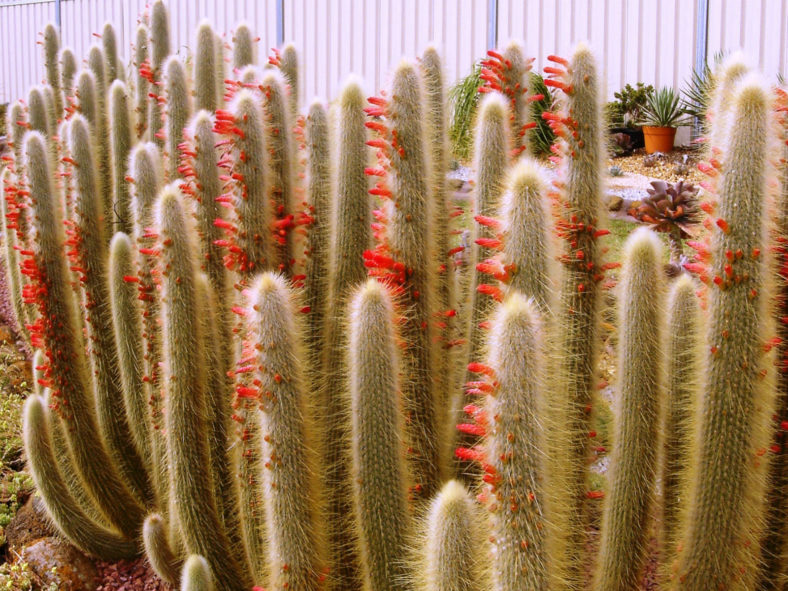Cleistocactus is a genus of columnar cacti native to mountainous areas of Peru, Uruguay, Bolivia, and Argentina. These cacti grow in large shrubby clumps mixed with other vegetation or clamoring over boulders. The genus name comes from the Greek "kleistos," meaning "closed," and refers to the flowers that hardly open.
Some might say that Cliestocactus is a genus of quantity over quality. Many of the features of this genus are small but profuse. The stems are typically only an inch (2.5 cm) in diameter. However, they branch readily at the base to form noticeable clumps. The spines, in general, are likewise small and flexible but, in most cases, are very numerous, even to the point of obscuring the stems. This trait is continued with the flowers. Many species have flowers that resemble little tubes of lipstick or firecrackers. Yet, the stems may be full of these flowers with many buds in the making. A Cliestocactus may have flowers open in the right conditions every day of the year.
Several species are extremely popular in cultivation and are among the most common cacti in nurseries worldwide. The two most popular of all are Cleistocactus strausii and Cleistocactus winteri.

Growing Conditions and General Care
Choosing well-draining soil and a location that receives full sun is important. In hot climates, providing light shade during the afternoon is recommended. Water your Cleistocactus during the spring and summer when the top inch (2.5 cm) of soil dries out. Reduce watering to every five weeks during the fall if the soil dries out. In winter, keep the soil dry, or the moist soil combined with the cold temperatures and dormancy may cause the roots to rot. Fertilize your Cleistocactus with a low-nitrogen fertilizer during the active growth period. A slow-release fertilizer applied in the spring will be enough for the year.
Propagation
It is possible to propagate by cutting a small branch from a Cleistocactus and rooting it, but this inevitably leaves a disfiguring scar near the base of the main stem. If an offset is removed for propagation, remember to let it dry for a week or so, letting the wound heal. Rooting usually occurs within 3 to 8 weeks. It is, therefore, best to raise Cleistocactus from seed. Be sure to get the seeds from a reputable source.
Problems
Watch for infestations of mealybugs and spider mites.
Links
- Back to genus Cleistocactus
- Succupedia: Browse succulents by Scientific Name, Common Name, Genus, Family, USDA Hardiness Zone, Origin, or cacti by Genus